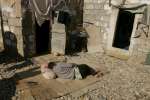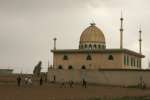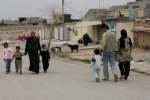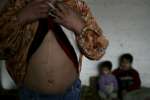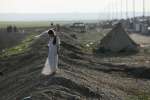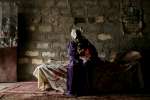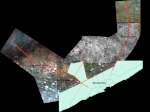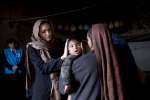UNHCR Statistical Online Population Database: Sources, Methods and Data Considerations
Country Data Sheets, 1 January 2013
- INTRODUCTION
- DEFINITIONS AND SCOPE
- DATA SOURCES AND PROVIDERS
- DATA COLLECTION METHODS
- ESTIMATING REFUGEE POPULATIONS IN INDUSTRIALIZED COUNTRIES
- OTHER DATA CONSIDERATIONS
INTRODUCTION
The 1951 Convention and the 1969 OAU Convention provide clear refugee definitions. The fact that more than 140 countries have acceded to the 1951 Convention or its 1967 Protocol, and many of these countries have incorporated the refugee definition contained in that Convention in their national legislation, makes refugees relatively easy to count.
Refugees can only be adequately protected when they are registered. Refugee statistics are generally based on individual registration records, kept by the host government. As such, UNHCR often supports countries in registering and documenting refugees.
Although many countries have implemented the international refugee definition into their national laws and procedures, keeping accurate statistics is not always straightforward. First, there may be a difference of opinion between UNHCR, NGOs and the host country about who is a refugee. For instance, nationals fleeing conflict in their country of origin may be officially recognized as refugees by some countries, but not by others. UNHCR statistics generally reflect the data of the host country. Second, although refugees are often registered individually, the accuracy of registration varies greatly, depending on the protection and operational environment. Third, refugees may not be aware of the need to register or may perceive the costs of registration as higher than its benefits. Fourth, some countries grant not only Convention refugee status, but also subsidiary forms of protection which are more difficult to compare internationally. Fifth, even though there is an international refugee definition, the administrative rules governing the granting of refugee status vary greatly. For instance, some countries have implemented strict criteria for asylum-seekers to be admitted to the asylum procedure. Sixth, administrative records tend to overestimate the actual number of individuals, because it is easier to register than to de-register individuals. This is particularly the case when registration is linked to the provision of services or benefits.
DEFINITIONS AND SCOPE
UNHCR's population of concern is composed of various groups of people including refugees, asylum-seekers, internally displaced persons (IDPs) protected/assisted by UNHCR, stateless persons and returnees (returned refugees and IDPs).
Refugees
In UNHCR statistics, refugees include individuals recognized under the 1951 Convention relating to the Status of Refugees; its 1967 Protocol; the 1969 OAU Convention Governing the Specific Aspects of Refugee Problems in Africa; those recognized in accordance with the UNHCR Statute; individuals granted complementary forms of protection; or, those enjoying "temporary protection".
Since 2007 the refugee population category also includes people in a refugee-like situation, most of who were previously included in the Others of concern group. This sub-category is descriptive in nature and includes groups of persons who are outside their country or territory of origin and who face protection risks similar to those of refugees, but for whom refugee status has, for practical or other reasons, not been ascertained.
The UNHCR mandate covers all refugees, except some 4.9 million Palestinian refugees residing in areas of operation of the United Nations Relief and Works Agency for Palestinian Refugees in the Near East (UNRWA) (external link). These Palestinian refugees are not included in UNHCR statistics. However, the Palestinian refugees living outside the UNRWA areas of operation fall under the responsibility of UNHCR and are thus included in the Statistical Online Population Database. (Read more)
Asylum-seekers
Asylum-seekers are persons who have applied for asylum or refugee status, but who have not yet received a final decision on their application. A distinction should be made between the number of asylum-seekers who have submitted an individual request during a certain period ("asylum applications submitted") and the number of asylum-seekers whose individual asylum request has not yet been decided at a certain date ("backlog of undecided or pending cases"). The Statistical Online Population Database provides both types of data. Caution should therefore be exercised when interpreting data on asylum-seekers.
Returned Refugees (Repatriation)
The population category of Returned refugees refers to refugees who have returned to their country of origin. In returnee situations, UNHCR seeks to reintegrate former refugees as soon as possible by targeting both returnees as well as receiving communities. Partners are actively engaged to provide development assistance. For statistical purposes, only refugees who have returned during the calendar year (January-December) are included in the population of concern to UNHCR. In practice, operations may assist returnees for longer or shorter periods, however.
Internally Displaced Persons (IDPs) protected/assisted by UNHCR
Internally Displaced Persons (IDPs) are people or groups of individuals who have been forced to leave their homes or places of habitual residence, in particular as a result of, or in order to avoid the effects of armed conflict, situations of generalized violence, violations of human rights or natural- or human-made disasters, and who have not crossed an international border. For purposes of UNHCR's statistics, this population only includes conflict-generated IDPs to whom the Office extends protection and/or assistance. As such, UNHCR statistics do not provide a comprehensive picture of global internal displacement. Moreover, UNHCR's IDP statistics are not necessarily representative of the entire IDP population in a given country but are exclusively limited to the ones who are protected and/or assisted by the Office. For global IDP estimates, consult the Internal Displacement Monitoring Centre (IDMC) of the Norwegian Refugee Council (NRC) website (external link). (Read more)
Since 2007 the IDP population category also includes people in IDP-like situations. This sub-category is descriptive in nature and includes groups of persons who are inside their country of nationality or habitual residence and who face protection risks similar to those of IDPs but who, for practical or other reasons, could not be reported as such.
Returned IDPs
Returned IDPs refers to internally displaced persons who have returned to their place of origin or habitual residence. In returnee situations, UNHCR seeks to reintegrate former IDPs as soon as possible by targeting both returnees as well as receiving communities. Partners are actively engaged to provide development assistance. For statistical purposes, only IDPs who have returned during the calendar year (January-December) are included in the population of concern to UNHCR. In practice, operations may assist returnees for longer or shorter periods, however.
Persons under UNHCR's statelessness mandate
In addition to protecting persons who are or have been displaced, UNHCR extends support to stateless persons by seeking to avoid and reduce statelessness. Stateless persons are individuals not considered as nationals by any State under relevant national laws. UNHCR statistics on statelessness also include people with undetermined nationality.
UNHCR has been entrusted by the General Assembly with fulfilling the functions under Article 11 of the 1961 Convention on the Reduction of Statelessness. As the agency designated to act as an intermediary between States and stateless persons, UNHCR provides expertise in the area of nationality and has been requested by its Executive Committee to promote accession to the 1954 Convention relating to the Status of Stateless Persons and the 1961 Convention.
Statelessness may be an important reason for fleeing one's place of origin. However, most stateless persons have not fled their country of habitual residence. Because stateless persons who are not refugees are difficult to enumerate, reliable global estimates on the scope of statelessness are currently not available. By the end of 2012, reliable estimates are only available for some 72 countries. (Read more)
Other groups or persons of concern
Other groups or persons of concern refers to individuals who do not necessarily fall directly into any of the groups above but to whom UNHCR has extended its protection and/or assistance services, based on humanitarian or other special grounds. Until 2003, this category also included stateless persons. Until 2007, people in refugee-like and IDP-like situations were also included in this category.
DATA SOURCES AND PROVIDERS
In most countries, various sources are used to establish the size and characteristics of the population of concern to UNHCR. There are three main providers of data regarding the population of concern to UNHCR: governmental agencies, UNHCR field offices and NGOs. Data are compiled or collected using mainly registers, surveys, registration processes or censuses. Whereas the refugee or aliens registers, wherever available, may be the primary source of refugee statistics, asylum-seeker data are often derived from a separate administrative system. Adding to the complexity, voluntary repatriation and resettlement are often managed by separate government agencies. Sources may also differ within countries. In many countries, refugee registration is not centralized, but maintained at the local level. Refugee characteristics, such as sex, age and specific needs may not be available from the register, but collected on an ad hoc basis through surveys.
In most industrialized countries, the host government is generally the sole data provider. In most non-industrialized countries, UNHCR assists the host country in refugee registration for the purpose of international protection, assistance or durable solutions. This assistance may vary from providing technical advice and limited assistance in countries with a more developed statistical infrastructure to managing the entire registration in countries with limited means.
To ensure that the refugee register is up-to-date, a record should be kept of all changes in the size of the population, including births, deaths, new arrivals, durable solutions and changes in legal status. In mass refugee situations and when populations are highly mobile, maintaining a refugee register is a serious challenge.
DATA COLLECTION METHODS
Each data collection method has its own strengths and limitations. A register is often created to establish a legal record, to administer entitlements or to deliver services. In a register, all persons should be included and records should be updated regularly. As pressures to register outweigh those to de-register, data from a register may become inflated, requiring periodic verification. On the other hand, registers have a tendency to miss out parts of the population, as not all those who qualify are able or willing to register.
Surveys and censuses are excellent sources for planning purposes, but do not allow for follow-up at the individual level. Although a census includes each individual, it provides only a "snapshot" of the situation and quickly becomes outdated. Surveys are cost effective, but, unless carried out according to strict rules, they may not provide a representative picture. In general, various data methods should be combined and triangulated to obtain the best possible picture.
The role of UNHCR in registration depends on the country of operation. In many cases the government is doing the registration alone, whereas in other situations UNHCR may assist the government or be fully in charge of it. Over the last years UNHCR has rolled out a registration software – proGres – which is a comprehensive database with possibilities for the individual and continuous registration of beneficiaries. The implementation of this registration software improved the statistics and facilitated well-founded programming decisions.
Refugees who are living outside camps, sometimes unlawfully, are more difficult to track and are underrepresented in UNHCR's statistics. Nevertheless, estimates for self-settled refugees are included in the statistics of a number of countries.
As noted earlier, refugee registers require continuous registration or verification to align the administrative records with the changing situation on the ground. Consequently, the population size in refugee camps is sometimes subject to significant periodic adjustments.
ESTIMATING REFUGEE POPULATIONS IN INDUSTRIALIZED COUNTRIES
Most industrialized countries lack a refugee register and are thus not in a position to provide accurate information on the number of refugees residing in their country. Up to and including 2006, to ensure that the refugee population in these countries is reflected in the global statistics, the number of refugees was estimated by UNHCR based on the arrival of refugees through resettlement programmes and the individual recognition of refugees over a 10-year (Europe and, since 2006, the United States) or 5-year (the United States before 2006, Canada and Oceania) period. Starting with the 2007 data, the cut-off period has been harmonized and now covers a 10-year period for Europe and non-European countries. Resettled refugees are excluded from the refugee estimates in all countries since 2007 but continue to be of concern to UNHCR.
OTHER DATA CONSIDERATIONS
Historical data pertaining to the former USSR are reported under the Russian Federation, while those for the former Czechoslovakia are reported under the Czech Republic. Data for the former Yugoslavia as well as Serbia and Montenegro have been reported under Serbia (and Kosovo: S/RES/1244 (1999)). Data pertaining to Sudan before the declaration of independence of South Sudan includes the latter. Since independence, data for South Sudan has been reported separately.





